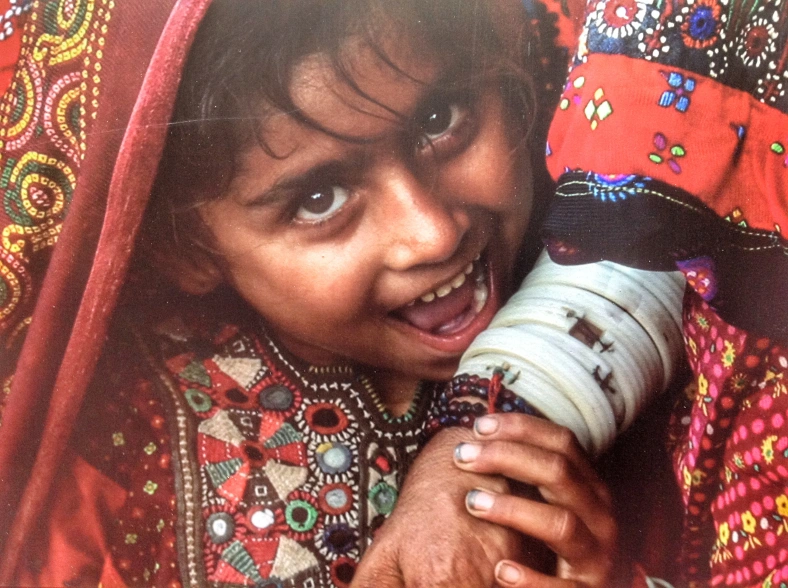
Face of Gujarat- Innumerable tribes come to mind, when one thinks of Gujarat
My knowledge about Gujarat, till the beginning of this year, was at best limited to the theplas, khakras, the sweet-tangy tasting chundo and perhaps the ‘Ae-halo’ calls of women dancing at the annual Garba Competition in my society during the Navratri season. But two weeks ago, when I arrived in Ahmadabad, that image was shattered.
The Sabarmati River flowed silently and gently amidst the chaos of a 21st century city, the Riverfront brimmed with stalls displaying local handicrafts, ethnic accessories, Ghagra cholis (traditional skirt like female attire) with intrinsic glass work, stationery life sized cars and in general a potpourri of colours, sounds and local delicacies.
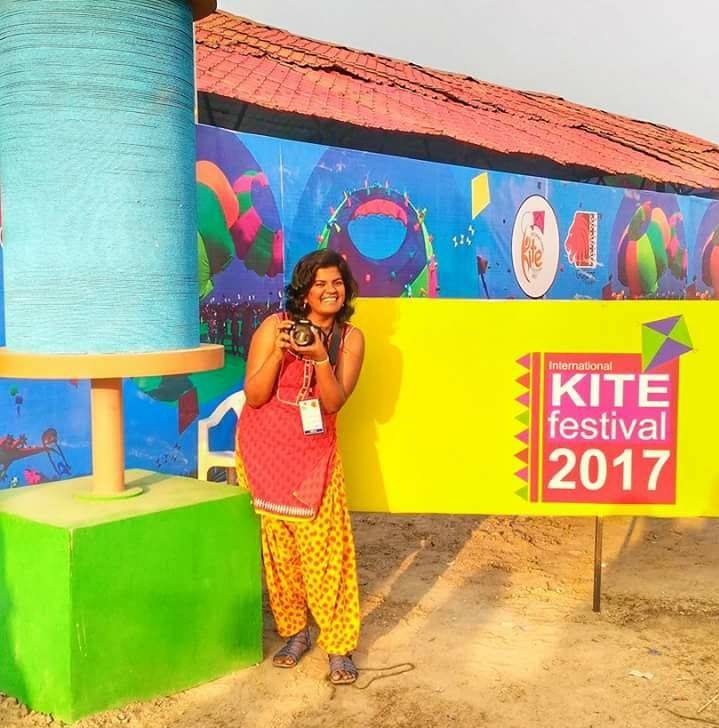
Feet on the Map at work 🙂
I found myself amidst a riot of bright colours, sweet tastes and tangy smells as a part of a media tour, which had travel writers, bloggers, photographers, journalists and content writers across India to showcase Gujarat’s vibrant personality.
Here’s why I thought the International Kite Festival, is a great introduction to Gujarat’s lesser known ‘kite culture.’
The inaugural revelry: I am not a party animal and often will just excuse myself of any ‘dhoom-dhamakas,’ but this one was dedicated to showcase why the Gujaratis bask with pride for their ‘Garvi Gujarat.’ It was a kaleidoscope of song, dance and drum beats, complete with a melange of delicious cuisine, vivacious handicrafts and vivid art work.
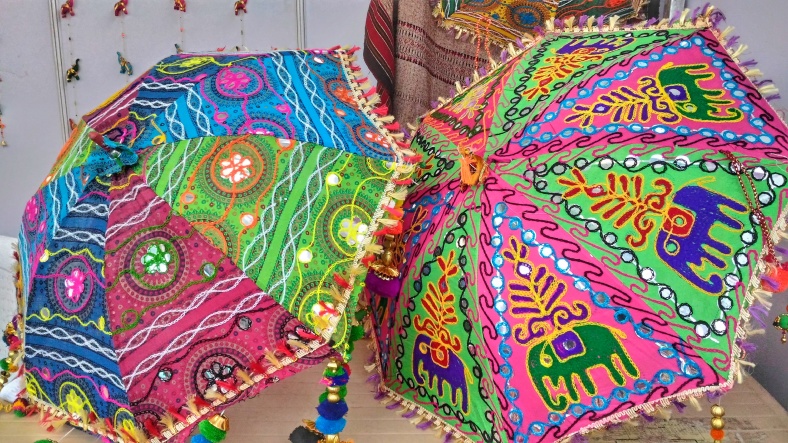
The handicraft bazaars showcased the best of ‘Vibrant Gujarat’
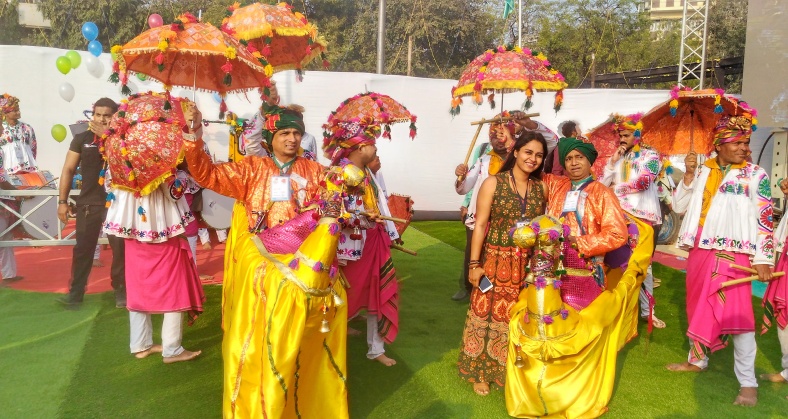
Travelers revel in the tune of ‘Garvi Gujarat’
Rubbing shoulders with History: The “kite tradition” is popularly believed to have been originated in China and historic information available credits the Chinese travellers- Hieun Tsang and Fa Hein for having brought the tradition of kite flying to India, in the 4th and 7th century respectively. As we moved across the Sabarmati Riverfront, enjoying various kites in the sky above, I came across a stall by kite fliers from Uttar Pradesh. The stall had an exhibited of collection of Kites as old as from 1899 by Late Mr. BP Srivastava. One particular kite that pulled a string of my heart was the “Simon Go Back Kite” from 1928. I was later reminded that “Go Back Simon”- was the slogan in protest against the Simon commission in 1927 and that the patriotic Lucknowites, at that time used the kites as a medium of protest. Kites with the slogan “Go Back Simon” composed over them were flown in the sky. Since the time that then, kite flying has become a tradition for Indians on Independence Day to as an expression of freedom, joy and patriotism. My heart jumped with joy as the subject matter of history books from my school took the form of reality!
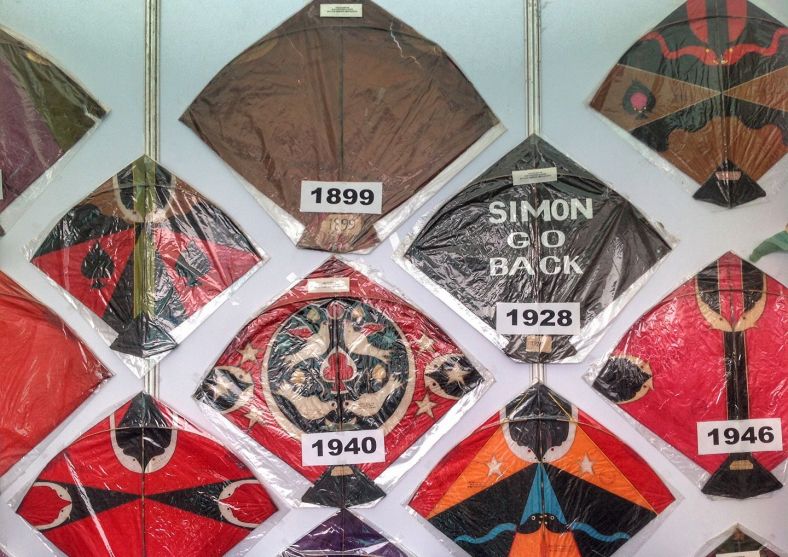
Back to the history- A historic showcase of kites flown during Indian struggle of Freedom & Independence

This year the International Kite Festival celebrated its 8th edition on a grand scale, with more than 100 international participants from across 32 countries and 50 participants across 10 states of India.

Participants flied kites of different, shapes, sizes and colours, each unique from the other. Some of the kites showcased cultures of a particular state/country. Seen here is a kite of Durga Maa from the state of West Bengal in India.

It’s a ball, it’s a bird. No, it’s a kite
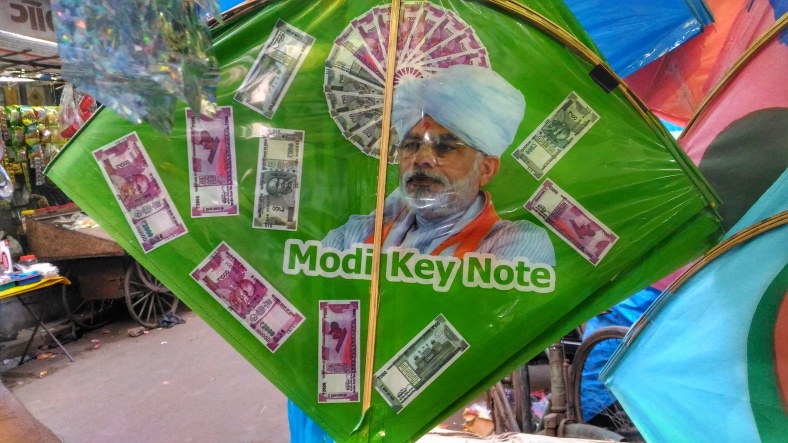
The kite market hasn’t been far away from the impacts of demonetization. While the market was flooded with designs on Indian government’s infamous note ban, kite makers said that the move for sure curtailed the demand for kite flying this year.
A different taste of Gujarat: As we made our way out of the IKF 2017, we walked through a fascinating narrow alleys of Jamalpur market in Ahmadabad; where a swarm of kite shops lined the streets on both the sides. My ignorant whims about the kite tradition dissipated gradually that evening as we navigated through dusty streets, learning about the clairvoyant old green, blue, pink houses that stood as witnesses to Gujarat’s kite making industry which claims to be as old as the tradition of kite flying itself. Curious to know more about the process of kite making, I entered a shop owned by Raju Bhai, who mentioned that the kite making skills came to him from his forefathers. He explained, “Kite making is not a one man’s job. Multiple people need to come together to make a kite, each specializing in different aspects of kite making- paper cutting, pattern designing, sticking bamboo sticks to the kite, spool (or firki) making, etc.”
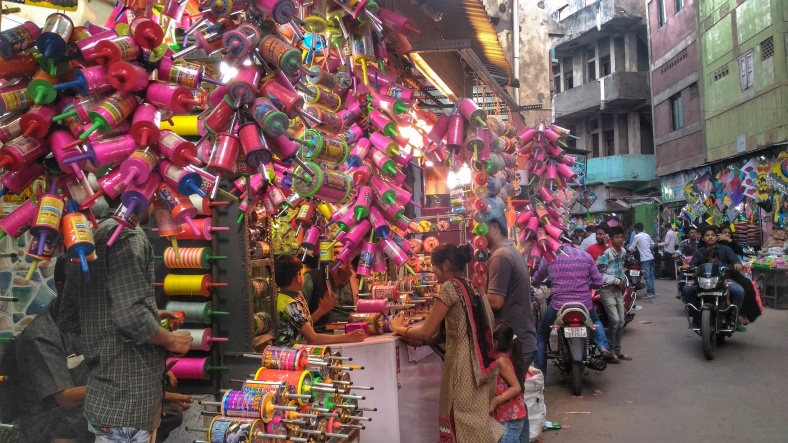
Walking the streets of Jamalpur- India’s biggest kite making hub
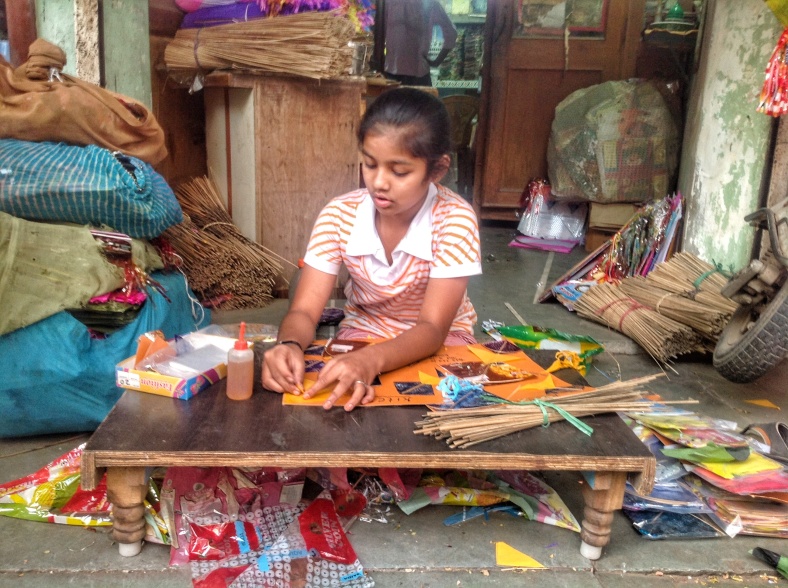
For many families in Jamalpur, kite making is a family business, kids learn the art of kite making right from the early ages
26 years of Kite tradition: While Kite flying has always been an intrinsic part of the Gujarati culture, celebrating ‘Uttarayana’ (the movement of sun upwards to north, marking the beginning of the harvest season), the Kite festival was formally launched 26 years back in 1989 on an international level. Considering the number of people at the event, I thought it was a pretty recent affair. It was only later that I found out that the artisan craft which mostly remained unorganized and unnoticed till a few decades back has now boomed into a 700 crore cottage industry.
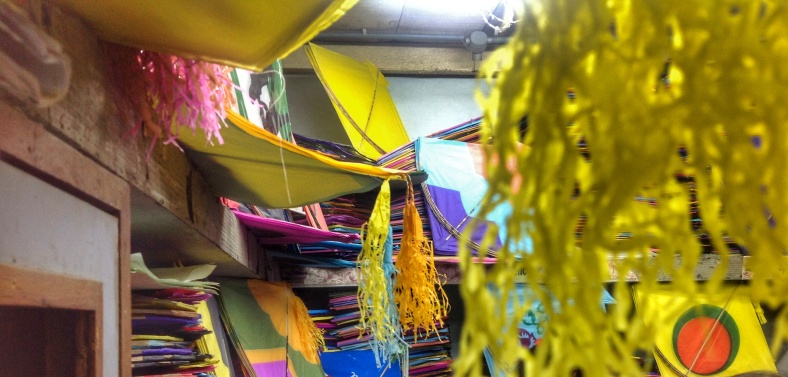
A kite maker’s workshop in Jamalpur
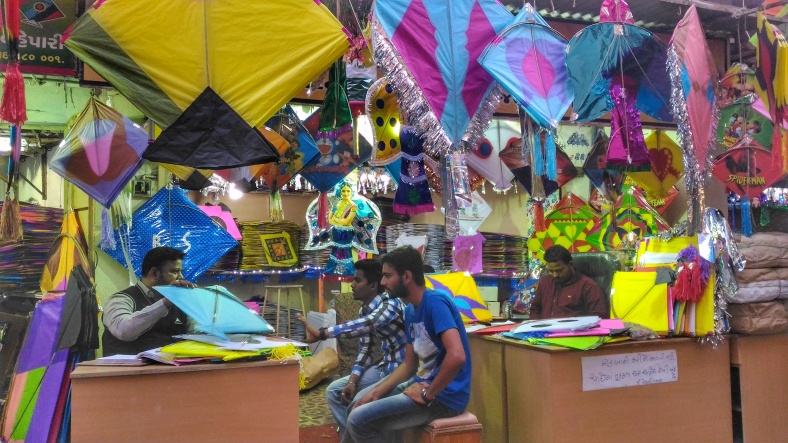
Customers bargaining and demanding different designs
Have you experienced a traditional festival of kite flying in India or somewhere else?
Join my adventures around the world on Instagram, Facebook and Twitter.
Note: I travelled to Ahmedabad as part of International Kite Festival, and was hosted by Tourism Corporation of Gujarat Limited.
Such an interesting account Deepika. You have knit every small detail of the festivity so well. It almost took me back to the Uttarayan celebrations 🙂
LikeLike
Thanks so much Sindhu, glad I was able to do justice to it 🙂
LikeLike
What an interesting experience it must have been Deepika. Seeing a kite fly is one thing and seeing how it is being made takes it to a whole new level. Love the designs of the kites here … definitely a work of art. Its been ages since I’ve flown a kite!
LikeLike
Absolutely, Delaine. Lot of times we act ignorant and are unaware of certain things we use in day-to-day life are made. This one was an eye opener for sure. Quite a learning 🙂
LikeLike
For a photoblogger like me this is so tempting to visit this. Well documented and enjoyed reading this.
LikeLiked by 1 person
Indeed. A photographer’s paradise 🙂
LikeLike
It sounds like you had a great and interesting experience. I havent attended a kite festival before. I actually have never even flown a kite before… its not very common in South America. But this festival looks very interesting and so so colorful!
LikeLike
Claudia, interesting you say that. In fact there was a team from Brazil too… 🙂
LikeLike